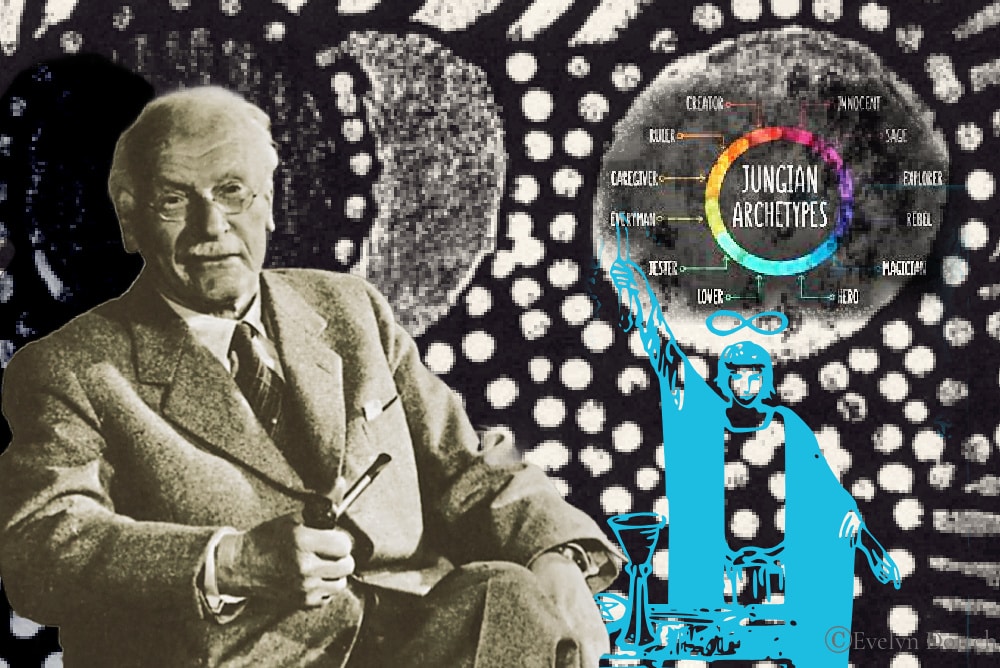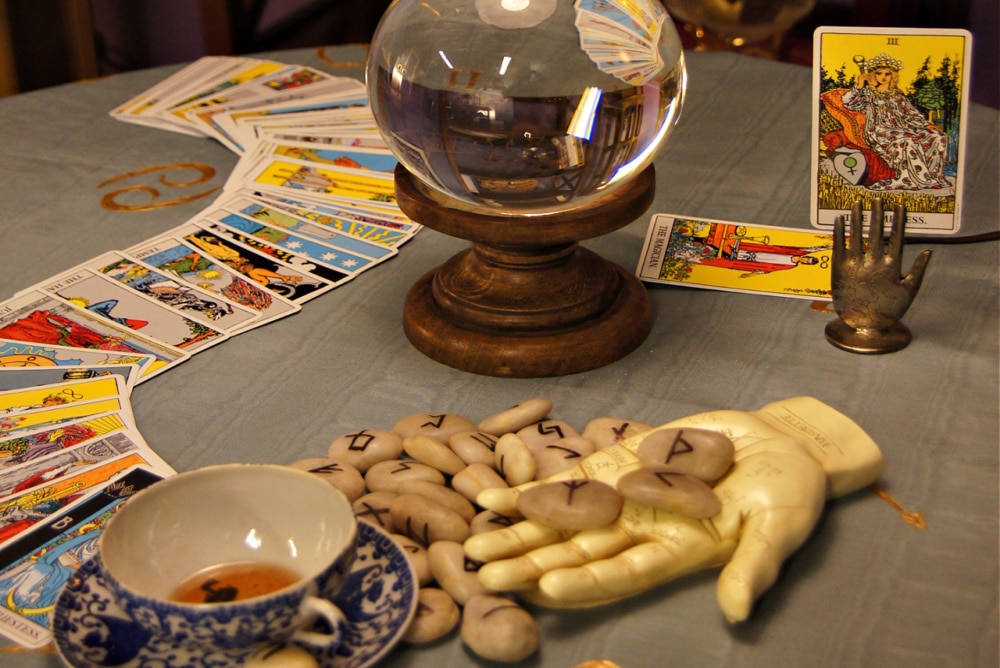Have you ever felt like the symbols in your tarot deck are speaking directly to your soul? These are more than just images, they are echoes from the collective unconscious, guiding you toward self-discovery and transformation. What if each card you pull isn’t random, but a key unlocking the archetypal patterns that shape your existence? These archetypes are not just symbols; they are living energies within the tarot, reflecting the universal forces at play within and around you. Tarot is more than a divination tool. Tarot is a bridge to the unconscious, revealing the hidden wisdom of the psyche.
The Swiss psychologist Carl Jung was a pioneer in the study of the human psyche and the founder of analytical psychology. His work explored the deep, often hidden structures of the mind, emphasizing the importance of dreams, symbols, and myths in understanding the self.
Jung theorized that deep within every human mind exists a realm of archetypes, universal symbols, figures, and narratives that transcend time and culture. He called this the collective unconscious, a wellspring of inherited wisdom encoded in myths, dreams, and, yes, the tarot. While Jung never explicitly linked his theory of archetypes to tarot, modern mystics recognize that the Major Arcana and Minor Arcana are woven with these same profound energies.
Join me as we explore the archetypal wisdom of tarot, revealing how these profound forces shape our experiences, our growth, and our connection to the unseen realms through the art of divination.
Jung described archetypes as the primal, universal patterns that shape human experience. They manifest in myths, legends, and spiritual traditions across cultures, appearing as gods, heroes, mentors, and shadowy adversaries. These patterns surface in our dreams, relationships, and subconscious fears.
Some of the core Jungian archetypes include:
- The Self – The ultimate state of integration and wholeness.
- The Shadow – The suppressed, hidden aspects of ourselves.
- The Anima/Animus – The feminine within the male psyche and the masculine within the female psyche.
- The Wise Old Man/Woman – The inner teacher and spiritual guide.
- The Trickster – The force of disruption and unexpected change.
These archetypes are more than just ideas. They are woven into the very fabric of human experience, appearing in myths, legends, and spiritual traditions across time. They are alive in tarot, whispering their wisdom, waiting to be uncovered.
The Major Arcana: The Archetypal Journey of the Soul
The Major Arcana is a mystical map of the soul’s journey toward enlightenment, mirroring Jung’s concept of individuation, the process of integrating all aspects of the self. These 22 cards symbolize key moments of spiritual evolution, acting as milestones on the path to self-realization.
Each card represents a powerful archetype, reflecting the trials, transformations, and revelations we experience throughout life. From the wide-eyed wonder of The Fool stepping into the unknown to the profound wisdom of The World, symbolizing completion and mastery, the Major Arcana tells a story of personal growth. These archetypes invite us to recognize their presence in our lives, offering guidance as we navigate our own transformative journeys.
Here’s how some key Major Arcana archetypes align with Jung’s psychological framework:
- The Fool → The Eternal Child: Innocence, potential, and the first leap into the unknown.
- The Magician → The Trickster: Manifestation, willpower, but also illusion and deception.
- The High Priestess → The Anima: Intuition, mystery, and the wisdom of the unconscious mind.
- The Empress → The Great Mother: Nurturing, fertility, abundance, and creative power.
- The Emperor → The Patriarch: Structure, authority, and control over the material realm.
- The Hierophant → The Wise Old Man/Woman: Spiritual mentorship and inherited knowledge.
- The Lovers → The Anima/Animus: The sacred union of opposites, inner balance, and self-acceptance.
- The Hermit → The Sage: Introspection, solitude, and the search for inner truth.
- The Shadow Cards (Death, The Devil, The Tower) → The Shadow Self: The confrontation with fears, destruction of illusions, and the necessity of transformation.
The Fool’s Journey through the Major Arcana is your journey. It is a path of discovery, guiding you through the trials, transformations, and revelations of life. Each card is a mirror, reflecting the archetypes within yourself and the world, urging you to embrace growth and self-awareness.
The Minor Arcana: Archetypes in Everyday Life
While the Major Arcana represents grand spiritual themes and deep soul lessons, the Minor Arcana brings these archetypes down to earth, revealing how they manifest in the day-to-day aspects of life. The experiences symbolized in these cards are woven into our everyday struggles, triumphs, and decisions, making them essential tools for self-awareness and growth.
Each suit reflects a fundamental aspect of human experience, offering insight into our emotions, thoughts, actions, and material reality. By understanding these archetypal energies, we can better navigate relationships, work through conflicts, and align ourselves with the cycles of growth and change that shape our personal evolution.
- Cups (Water) → The Emotional Self: Linked to Jung’s feeling function, representing relationships, intuition, and emotional depth.
- Swords (Air) → The Intellectual Self: Associated with thinking, logic, strategy, and conflict.
- Wands (Fire) → The Instinctual Self: Tied to intuition, passion, and creative energy.
- Pentacles (Earth) → The Material Self: Connected to sensation, stability, finances, and the physical world.
Each number and court card carries an archetype of its own, representing distinct aspects of personal growth, challenges, and transformation. The numbered cards illustrate stages of development within each suit, from new beginnings to mastery, while the court cards embody personality traits, roles, and influences in our lives. These cards provide insight into the psychological and spiritual lessons you are currently experiencing, acting as guides to understanding your inner world and external circumstances.
Using Tarot as a Tool for Shadow Work
Jungian psychology emphasizes shadow work, which is the process of confronting and integrating the parts of ourselves we suppress. It is a path of self-exploration that requires honesty, courage, and a willingness to embrace the unknown aspects of our psyche. Tarot serves as a bridge to the unconscious, offering a powerful tool to bring these hidden aspects to light and work with them consciously.
- Recognize when an archetype is dominating our psyche (e.g., feeling trapped by The Devil’s energy of addiction and illusion).
- Work with shadow archetypes constructively instead of fearing them.
- Identify patterns in our thoughts, emotions, and behaviors through repeated card pulls.
- Use tarot journaling to deepen our relationship with personal archetypes.
Tarot Journaling for Shadow Work
Shadow work is the process of bringing awareness to the parts of yourself that have been ignored, suppressed, or denied. These are often emotions, beliefs, or fears that stem from past experiences and conditioning. Using tarot for journaling allows you to consciously engage with your shadow archetypes, providing a structured way to explore and integrate these hidden aspects. Try this method:
- Draw a Card: Pull a card that represents an aspect of your shadow or a recurring challenge.
- Reflect & Write: Ask yourself—What emotions does this archetype evoke? How does it manifest in my life? What lesson is it trying to teach me?
- Dialogue with the Archetype: Write as if the archetype is speaking to you. What does it want you to know?
- Integration: How can you work with this energy rather than against it? What actions can you take to acknowledge and integrate this part of yourself?
By consciously engaging with tarot journaling, you actively participate in your own individuation process, moving toward greater self-awareness and empowerment.
Tarot as the Mirror of the Psyche
The symbols in your tarot deck are more than just illustrations. They are reflections of your inner world, revealing aspects of your psyche that you may not even be consciously aware of. Each card is an invitation to explore the archetypal forces shaping your reality, bringing to light the hidden narratives that influence your journey.
Whether you are standing at the precipice of change like The Fool, or uncovering hidden truths with The High Priestess, the tarot provides a roadmap for deep self-discovery. It guides you toward understanding the cycles of your life, the lessons you are meant to learn, and the energies that shape your personal evolution.
Next time you shuffle your deck, take a deep breath and listen.
Which archetype is calling to you?🎴
🌟What wisdom is it ready to unveil?


